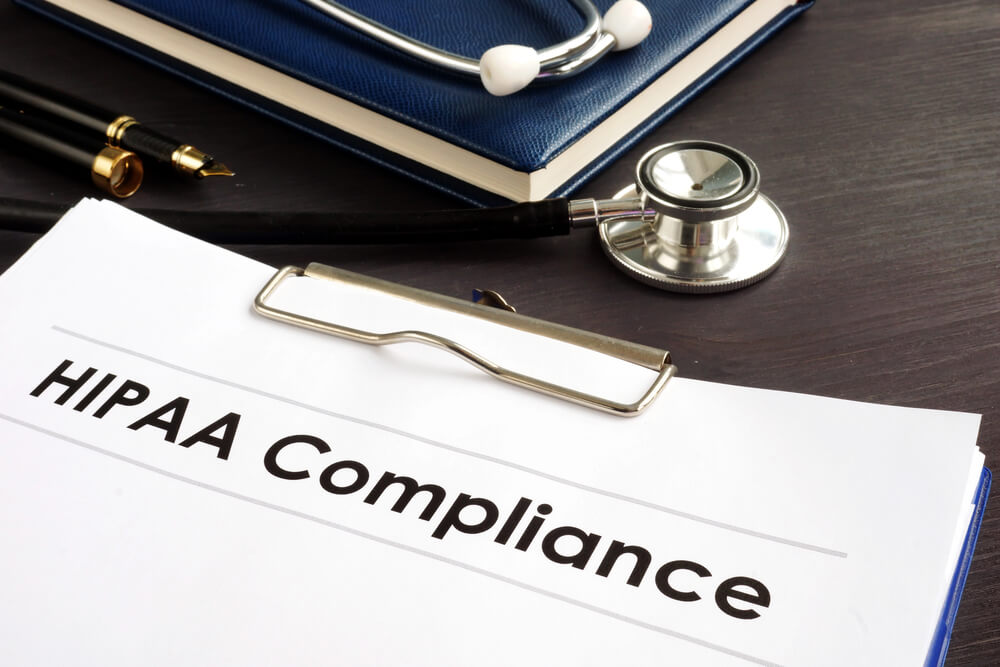Every year, cybercriminals target businesses in manufacturing, healthcare, energy, finance, professional services, and retail. If your organization handles sensitive financial, health, or client information, protecting data and complying with ever-evolving regulations is more urgent than ever before. HITRUST compliance can help you build a robust security posture and meet regulatory requirements from within a streamlined, standardized framework. This guide explains what HITRUST compliance is and what it involves.
What Does HITRUST Stand For?

What is HITRUST? It is the name of a non-profit organization that was formed in 2007 to create a standardized set of cybersecurity and healthcare compliance regulations. Originally, HITRUST meant Health Information Trust Alliance, but over the years, the organization shifted to the acronym only.
In broader terms, the meaning of HITRUST also refers to the organization’s data security framework. The HITRUST Common Security Framework helps companies comply with the HIPAA Privacy Rule, Security Rule, Breach Notification Rule, and other requirements. For over 15 years, HITRUST has worked with experts in cybersecurity, IT, privacy, and risk management to stay at the cutting edge of data protection standards.
What Is HITRUST Compliance?
To achieve HITRUST certification, businesses must meet the rigorous standards in the HITRUST CSF. This information security framework covers more than a dozen control categories for risk management, access control, governance, physical security, privacy, and other areas. HITRUST compliance requires your organization to map the required controls to your operations, create and implement processes, monitor for ongoing performance, and keep records to demonstrate that your company meets CSF standards.
HITRUST is one of the most widely used and trusted data security frameworks in the healthcare industry. Over 80% of hospitals, health plans, and healthcare technology systems follow the HITRUST CSF.
The History of the HITRUST Framework

The HITRUST CSF was originally designed to help health organizations comply effectively with HIPAA regulations. HIPAA privacy and security regulations outline what healthcare providers must do but not exactly how to accomplish it. Many HIPAA rules can seem vague, calling for “appropriate administrative, physical and technical safeguards,” but not defining what “appropriate” means.
In response, HITRUST partnered with public and private industry leaders to create a unified standard of best practices for risk management, information security, and HIPAA compliance. These time-tested standards give organizations clear objectives for which to aim. Fast forward 15 years, and the HITRUST CSF has helped more than 30,000 organizations progress toward cybersecurity maturity.
What Is the Difference Between HIPAA and HITRUST Compliance?
The HITRUST framework is closely linked to the Health Insurance Portability and Accountability Act. The two programs share many privacy and security requirements, but HITRUST isn’t the same as HIPAA. That said, HITRUST certification can make ongoing HIPAA compliance much more manageable.
HIPAA Compliance
The purpose of HIPAA compliance is to prevent sensitive health information from being disclosed without patient consent. HIPAA regulations outline protections for patient privacy and specify standards of behavior for hospitals, clinics, health insurance companies, billing agencies, and third-party partners.
HIPAA compliance is mandatory in the healthcare industry. The U.S. Department of Health and Human Services Office for Civil Rights carries out periodic inspections of covered entity processes and systems. Violations can lead to large fines or even criminal charges, depending on the nature of the disclosure.
HITRUST Compliance
HITRUST is an industry-leading certification process. The purpose of HITRUST compliance is to show that your organization follows best practices in risk management, privacy, and data security. The requirements for HITRUST certification can include HIPAA regulations, but they also include controls for many other industries and laws, such as Europe’s General Data Protection Regulation.
With HITRUST certification, your organization demonstrates ongoing compliance with data security best practices. This can generate trust in your services and put investors and business clients at ease.
Is HITRUST Compliance Required?
HITRUST certification is not required by any industry, but virtually every organization can benefit from following this combination of risk management and adherence to relevant regulations. HITRUST is an effective way to coordinate compliance requirements, better manage risk, and enhance the security of your data systems.
What Are the Advantages of the HITRUST CSF?

The HITRUST CSF helps organizations of all sizes assess and enhance their security posture based on risk management and compliance. For many industries, this state-of-the-art framework is the gold standard of cybersecurity.
Data Security Best Practices for Every Industry
Even though HITRUST is commonly associated with healthcare companies, its standards are industry-agnostic. In other words, the HITRUST CSF framework complies with regulations and best practices for virtually any organization:
- Pharmaceutical manufacturers
- Defense contractors and aerospace manufacturers
- Financial organizations and law firms
- Retailers and global e-commerce brands
- Software developers and cloud service providers
- Fintech companies, payment gateways, investment firms
HITRUST is adaptable. It scales well to the size, technology infrastructure, unique operations, and regulatory requirements of different businesses and industries.
Streamlined Regulatory Compliance
One of the reasons HITRUST is so widely used is that it breaks down barriers to compliance efficiency. The HITRUST CSF encompasses a comprehensive set of security protocols based on a variety of existing frameworks from respected standards organizations:
- Payment Card Industry Security Standards Council
- International Organization for Standardization
- National Institute of Standards and Technology
- American Institute of Certified Public Accountants
- Information Systems Audit and Control Association
Implementing the HITRUST CSF for your organization can also help you comply with PCI DSS, GDPR, CCPA/CCPR, COBIT, HIPAA, NIST 800-53, ISO 27001, and other frameworks. HITRUST standardizes regulatory requirements to simplify compliance. Instead of juggling multiple standards and a confusing array of policies, your compliance team can adhere to one comprehensive framework.
Organization-Specific Controls
The HITRUST CSF is adaptable and customizable. There is no single set of regulations that organizations must follow to achieve HITRUST certification. Compliance is based on security requirements and risks relevant to your business.
The number of relevant HITRUST controls depends on the size and purpose of your organization, how many employees you have, your IT infrastructure, regulatory requirements, and other factors. The road to HITRUST compliance improves your company’s cybersecurity posture at the ideal scale.
What Are HITRUST Compliance Maturity Levels?

Cybersecurity maturity means addressing each component of your current security posture, determining how effective your practices and systems are, and making the necessary improvements. The goal is to implement the highest information security practices possible for your organization.
The HITRUST framework has five maturity levels. Reaching each level requires successfully completing the previous level.
1. Policy
The core of any security program is policy. This level requires that you create standardized, comprehensive, and clear policies for all HITRUST CSF controls. Your policies must address all relevant components for your organization and have approval from the proper authorities.
2. Procedure
Procedures explain, outline, and assign organizational policies. They state who is responsible for carrying out policies and how. Effective procedures meet stakeholder requirements and organizational needs.
3. Implementation
This level focuses on how well procedures are implemented. HITRUST compliance must be consistent across your entire organization, with no exceptions or modifications. Many companies use a compliance automation platform like Compyl to track implementation in various departments and systems.
4. Evaluation
HITRUST compliance requires internal audits. These evaluate the effectiveness, feasibility, and efficiency of your controls over time. At this stage, you should be looking for trends. Aim to determine which processes are effective and which require changes to achieve infosec maturity. Document all audits.
5. Management
The final level of HITRUST compliance maturity is an ongoing assessment of how well the organization manages controls and your overall response to risk. Successful management means your business can identify risks and address them effectively. Your management team must be able to recognize weaknesses in system controls and take corrective action.
How Can HITRUST Certification Benefit Your Organization?

Achieving HITRUST certification isn’t easy. The process requires time, effort, focus, and persistence. At the same time, the benefits are large and long-lasting. Consider just a few reasons why pursuing HITRUST compliance is worth it.
Better Insights Into Enterprise Risk
If your attention to security concerns ends as soon as you achieve compliance, you’re missing an important piece of the bigger picture. Doing the bare minimum necessary for your company’s legal requirements or regulatory checklist isn’t a good idea with the constantly evolving cyber threats that today’s businesses face.
HITRUST compliance requires an ongoing assessment of your security posture, operations, and resources. These assessments can provide critical insights into emerging threats, evolving risks, and urgent needs as your organization grows.
This wide-angle view reveals security gaps and vulnerabilities that you might not normally recognize. Detecting and mitigating risks is one of your best defenses in the fast-paced world of data security.
Centralized Compliance Efforts
Every organization that handles sensitive client data must comply with multiple regulations. Federal, state, and local laws govern privacy and data security for healthcare and financial institutions. International businesses face even more complex requirements, including the often-confusing GDPR.
Just keeping track of compliance requirements for multiple agencies is complex. Monitoring updates and ensuring that you meet all deadlines can seem overwhelming. With the HITECT CSF framework, you can track all relevant agencies for your organization so you never miss a change or a filing date.
Having all regulatory policies, assessments, supporting documents, and related procedures organized in a central framework simplifies the compliance process across agencies. A single compliance assessment can often satisfy multiple regulatory requirements, cutting down on audit expenses and organizational resources.
Improved Data Security
HIPAA regulations and other industry requirements offer a good foundation for data security. Unfortunately, government agencies are often slow to address evolving threats.
With HITRUST, you can achieve more. HITRUST compliance follows cutting-edge guidelines proposed by industry leaders in IT, network security, integrated risk, governance, and infosec. By leveraging all the relevant frameworks for your industry, you can build a custom blend of security protocols. Data-driven assessments strengthen your defenses and help you mitigate threats, protecting your organization’s sensitive data, technology, equipment, and personnel. Considering the average cost of a data breach, the returns on this type of investment can number into tens of millions of dollars. For example, the Change Healthcare breach has cost over $3 billion.
Continual Updates and Advancements
As the tactics of bad actors evolve and new security threats arise, data security best practices have to adapt. Defenses and procedures from a decade ago are woefully inadequate for modern cyber threats.
The devastating losses from ransomware attacks, phishing scams, and data breaches, including high-profile attacks on major healthcare companies such as Change Healthcare, are proof that enterprises need a resilient data security framework.
HITRUST compliance incorporates a flexible yet comprehensive approach to risk management and data security, ensuring you are prepared to meet or exceed your regulatory requirements. You can be consistently on top of relevant regulations regardless of your industry, company size, or organization type.
Client Confidence
One of the most significant benefits of HITRUST certification is that it shows customers that you handle their sensitive data safely and securely. In many industries, potential clients insist that you pursue certification as a condition of signing with you. In the healthcare industry, for example, many health insurers require hospitals to have HITRUST certification before referring policyholders.
Even if your customers are not yet aware of what HITRUST means for their data security, certification reinforces your excellent security posture and dedication to network integrity. HITRUST compliance means you are meeting or exceeding required regulations, actively assessing risks, and monitoring your data.
What Does the HITRUST Compliance Certification Process Involve?

Preparing for a HITRUST audit depends on the type of certification you’re pursuing. There are three levels of HITRUST CSF certification: e1 (foundational), i1 (comprehensive), and r2 (expanded).
1. Select Your Certification Goals
HITRUST i1 certification requires your organization to implement robust data security procedures, such as access controls and network monitoring. This type of certification shows that your company has a comprehensive cybersecurity framework in place.
The certification audit covers more than 180 controls across 19 control domains, including endpoint protection and risk management. Successfully completing the Validation Assessment means that your organization is HITRUST certified for one year.
HITRUST r2 certification takes a blended approach to data security, incorporating risk management protocols and compliance requirements to determine a set of specific procedures for your organization. Instead of a one-size-fits-all set of regulations, the r2 assessment looks at the optimal security posture for your business, customizing the audit from a pool of over 1,000 potential controls.
HITRUST r2 certification provides the highest level of confidence in your cybersecurity posture. Successful completion requires deep information security maturity, which is why many companies begin with i1 certification and gradually progress toward r2 compliance. Your r2 certification lasts for two years, with a smaller compliance check in between.
2. Integrate the HITRUST CSF
The journey to HITRUST certification requires mapping relevant controls and regulatory frameworks. Risk assessments, risk management, and risk mitigation procedures help you reduce exposure to threats. Implementing data security best practices strengthens your defenses against internal and external threats to sensitive data.
Applying industry requirements and best practices to your systems and operations often uncovers weaknesses in existing approaches to data integrity. The HITRUST CSF helps you address gaps and vulnerabilities and correct them. To attain cybersecurity maturity, your team must monitor employee adoption, compliance rates, and framework updates so your system stays current.
3. Prepare for Certification
Even for organizations that have good data security policies, systems, personnel, and controls in place, achieving HITRUST i1 and r2 certifications requires time and effort. Preparing for your first Validated Assessment can often take six months to a year or more. During this time, you have to gather extensive documentation that proves the effectiveness of your controls and shows compliance rates across your organization.
4. Carry Out a Readiness Assessment (Optional)
Before taking on the certification audit, it’s recommended to assess your current security posture and compliance with requirements. During this process, a HITRUST integration professional works with you to determine which regulations apply to your organization and set up a centralized platform for tracking compliance. Once you apply these rigorous security protocols and meet the standards in the HITRUST framework, you can pursue certification.
4. Perform a Validation Assessment
Only HITRUST-approved External Assessors can deliver the Validated Assessment for certification. HITRUST keeps an extensive list of External Assessors.
The compliance audit digs deep into your organization’s data security, procedures, and practices. The Validation Assessment itself can often take several months or more depending on the size and complexity of your business and regulatory requirements.
5. Approval
The final completed assessment is uploaded to the HITRUST MyCSF platform for approval. Once the findings have been analyzed and approved, your organization is officially HITRUST compliance certified.
Is It Difficult To Achieve HITRUST Compliance?
Attaining HITRUST certification requires a significant commitment of time and resources. At the same time, your organization benefits from a centralized compliance platform, a vastly improved security posture, and a reputation for data security excellence.
Working with a HITRUST integration specialist can make the process less daunting. Explore what HITRUST compliance means for your organization. Contact us today for more information or to request a demonstration. It’s time to achieve your data security and compliance goals.




